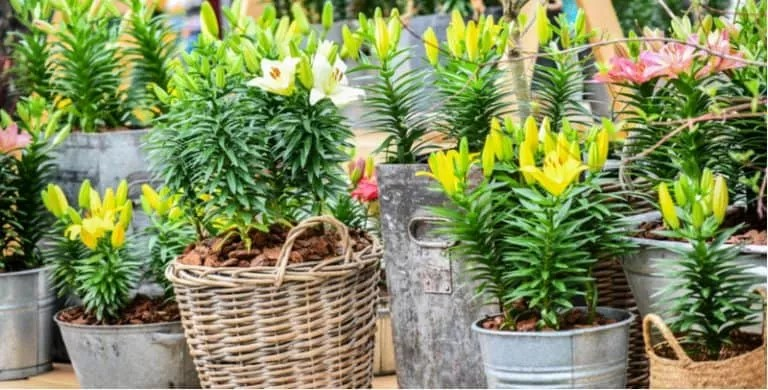Table of Contents
The Asiatic lily is one of the most beautiful flowers that can be easily grown indoors and outdoors. As the name suggests, they originated in Asia and are much easier to take care of than oriental lilies. Its magnificent beauty can elevate the ambience of your garden and home. In contrast to beautiful-looking delicate flower plants, Asiatic lilies are pretty low on maintenance and are easy to grow. Planting Asiatic lilies is a very good idea because they will keep your home beautiful by producing gorgeous flowers for years to come.
It is a flowering bulb plant, which means they die back and go dormant after the blooming season. They are a great addition to your summer garden, so if you are inquisitive about how to plant and take care of them, here are some tips and tricks to just do it right.
Asiatic lilies are the hardest variety of all lilies. They are perfect for beginners because they flower fast and multiply quickly. They come in a wide range of colours with a bloom time of up to one month.
How to Grow Asiatic Lilies
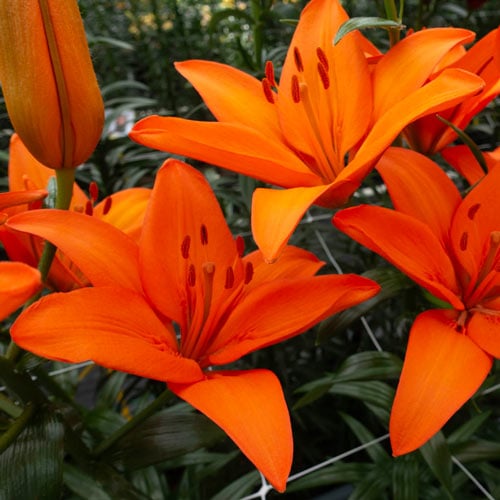
Asiatic lilies have long arching stems with dark green leaves that have visible white veins. The lilies grow in large clumps in a circular format; the flowers are brightly spotted, usually unscented, and grow on a sturdy stem. They have a high bud count, and flowers come in different shapes, from simple open bowls trumpets to flowers with gorgeously recurved petals.
Late summer or fall is considered the best time to plant lilies because it gives the bulbs some time to establish their root system before the plant begins to grow in spring. Plant the bulbs as soon as you buy them to keep them from dying out.
Pick a Spot
- Asiatics lilies grow best in loose, fertile, and well-draining soil. Some Asian varieties prefer slightly acidic soil.
- Lily bulbs have overlapping scales, which may rot if the moisture gets locked. So a spot where water dries quickly after rain works best. At the same time, the soil should drain well but should be able to retain some moisture.
- Plant them under full sun or in a partially shaded area. They will like at least 6 hours of sunlight to grow to their full potential.
- Their compact nature makes them suitable to be planted in the garden or containers. Make sure to check for drainage holes while planting in containers, not to let waterlog.
How to Plant Asiatic Lily Plant
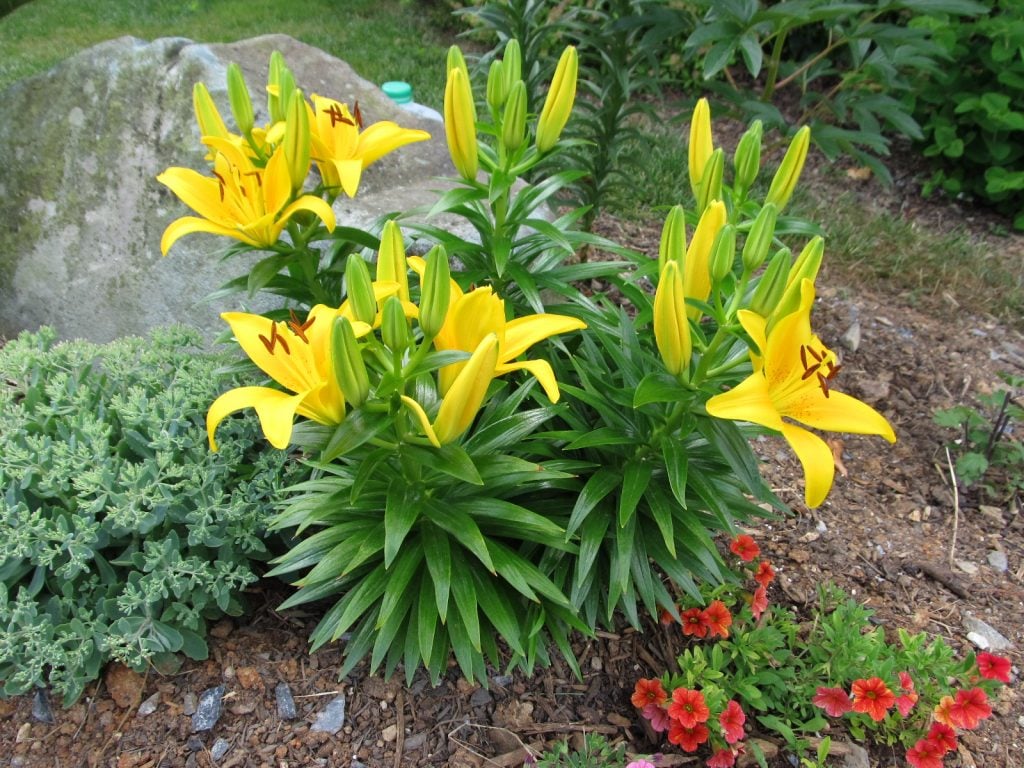
- Treat your soil with organic compost to improve the soil composition before planting Asiatic lilies.
- Dig at least 8 inches deep hole at each spot where you want to plant the bulb, and then place the bulb with its flat side down. The hole usually should be three times deeper than the size of the bulb.
- Plant each bulb 12 to 18 inches and provide it with a light mulch to retain the moisture.
- When planting indoors in a pot, you do not need to bury the bulbs as deep; just place the bulb in a manner that it is visible from the thin topsoil layer.
- Water immediately after planting the bulb to let the soil settle around it.
- Plant at least three bulbs together, which will further multiply into groupings. Try planting the bulbs in odd numbers, and the result is surprisingly amazing.
Pro Tip: Asiatic lilies can be planted in containers during winter to get them ready to bloom in the coming spring. Fill a third of the container with potting mix and place the bulbs two inches apart, and cover the bulbs with more potting mix to their tips. Place the container in a cool, frost-free face and water it regularly. After the season’s last frost, move the container to a sunny spot. When the plant begins to grow, add more potting mix and only water when the soil starts looking dry. Asiatic lilies will start showing up in early summer.
Caring Tips for Asiatic Lily Plant
1. Watering Asiatic Lilies
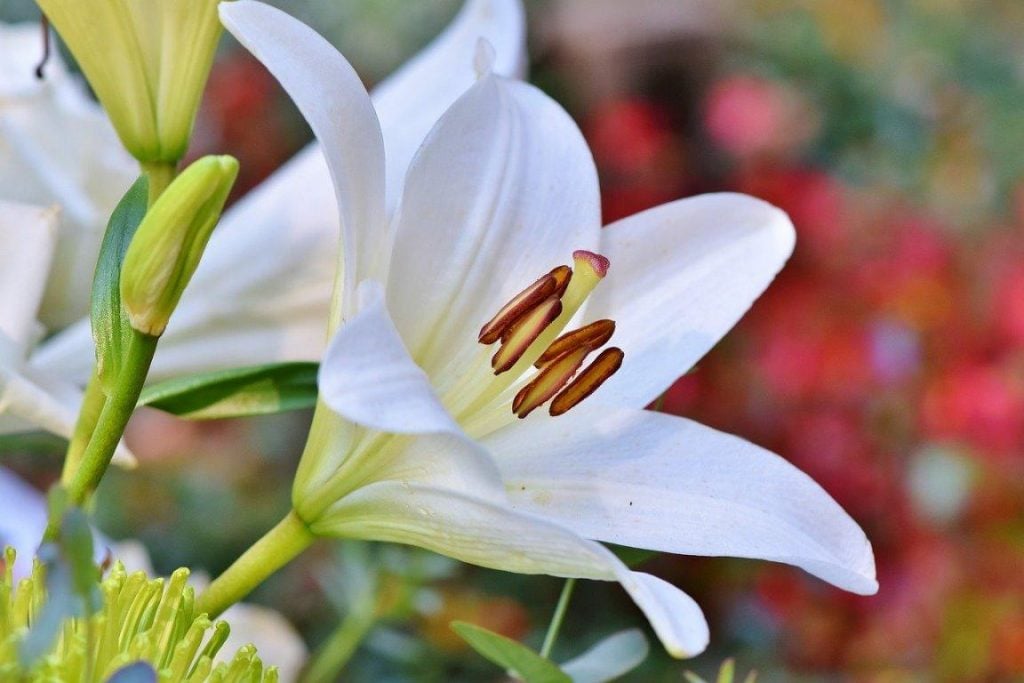
Asiatic lilies like well-drained soil but not dry. They need 1 to 2 inches of water every week. During dry spells, they may need supplemental water to keep the root zone moist. Keep checking the top layer of soil to know if the plant needs water. A drip hose proves to be quite useful during dry periods. The soil should stay moist at all times but not soggy, as the soggy soil may promote rot.
2. Fertilizer for Asiatic Lilies
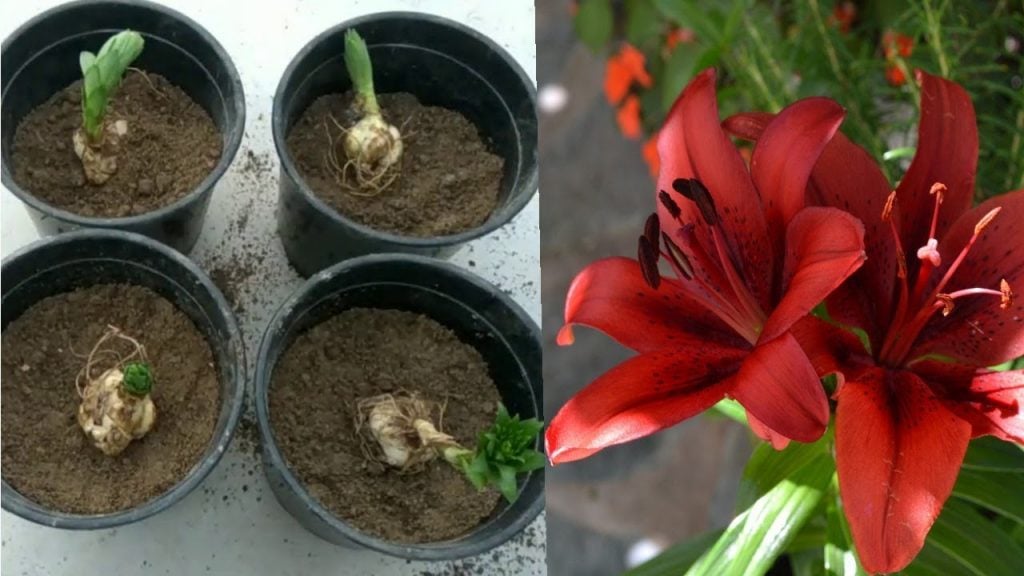
Before planting the lilies, improve the quality of your soil with natural compost. For large and healthy blooms, supply phosphorus and other nutrients to your Asiatic lilies plant by creating a light ring of fertilizer around your lit. Mix the fertilizer in the topsoil and feed the plant when the lilies start blooming each spring. You can also go with a single application of slow-release liquid fertilizer. These plants do not frequent fertilization but only once when the buds start appearing.
3. Pest Control for Asiatic Lilies
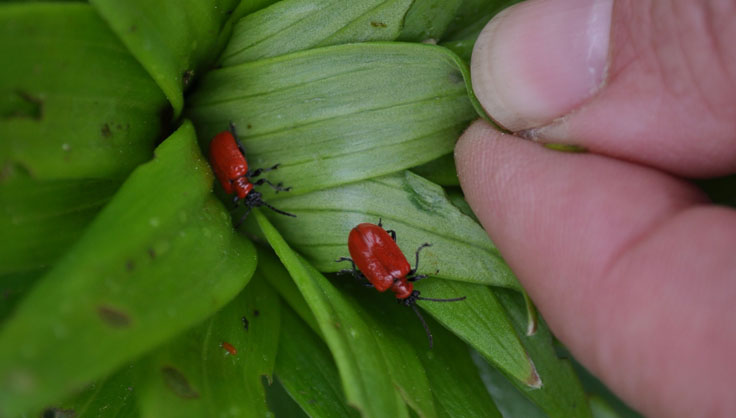
Asiatic lilies are very attractive to pests like snails, aphids, slugs, red beetles, rabbits, or voles, so keep monitoring the plants regularly for any foliage damage. Use natural pesticides or wire mesh cages to protect your Asiatic lilies. Asiatic lilies are also very vulnerable to grey mould fungal infections that grow in moisture. So, make sure to provide your plant with enough circulation to avoid moisture trapping.
7 Most Popular Asiatic Lilies
There are more than 50 varieties of Asiatic lilies that come in various colour shades and can be grown on flower beds or containers. They come in various forms, some with double flowers, some are tall stalks with a single flower per branch, and some are shrub-like lilies that are loaded with flowers. Here are some top picks for you.
1. Tiny Rocket
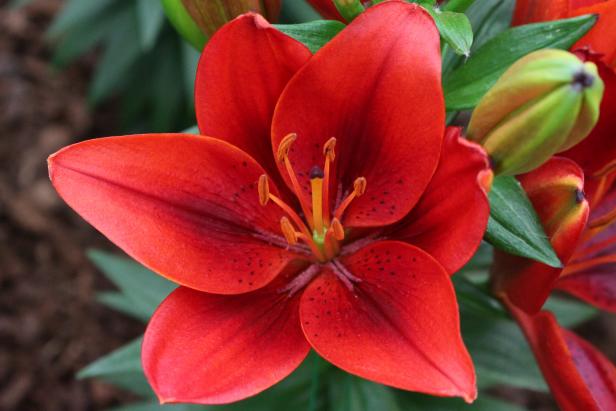
Tiny Rocket is a dwarf asiatic lily which was specially created for container gardens in the Netherlands. They can be mass planted on the ground or in a group of containers. The up-facing, deep red flowers bloom in midsummer till fall in a sunny or partially shaded spot.
2. Tiny Ghost
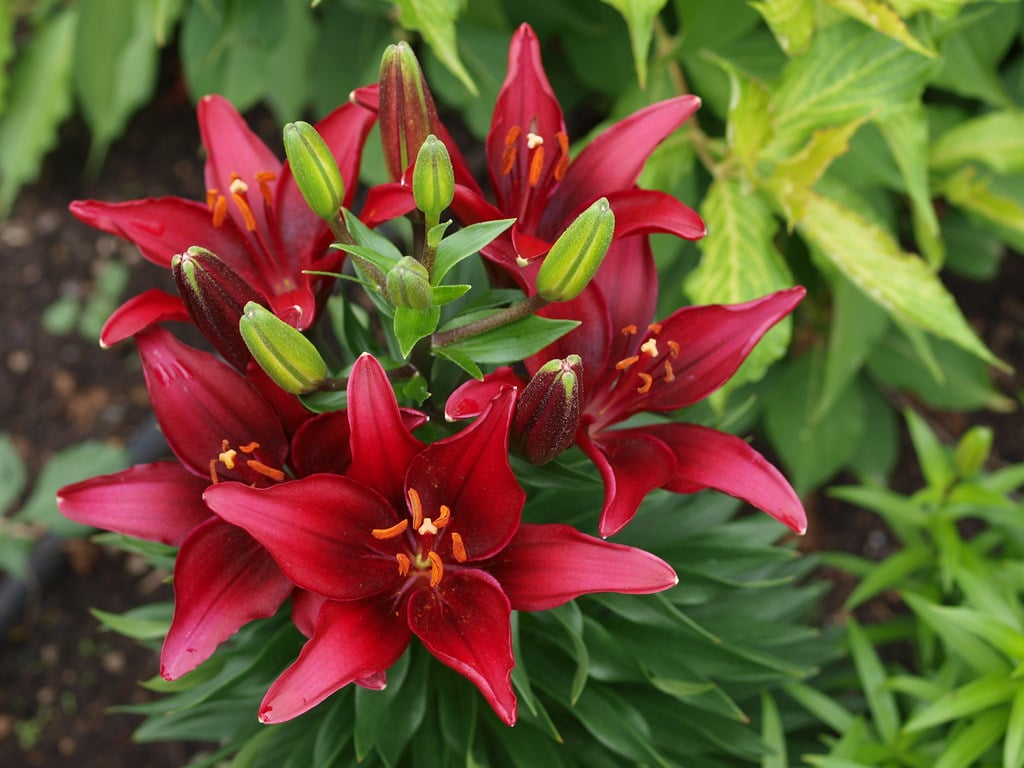
Tiny ghost lilies are stunning with their rich, red-violet flowers that show up earlier than most other varieties. The flowers are big, but the plant is very short in height and does not have any scent. To make them look effective in your garden, plant them in mass in front of your border for a summer show.
3. Tiny Double You
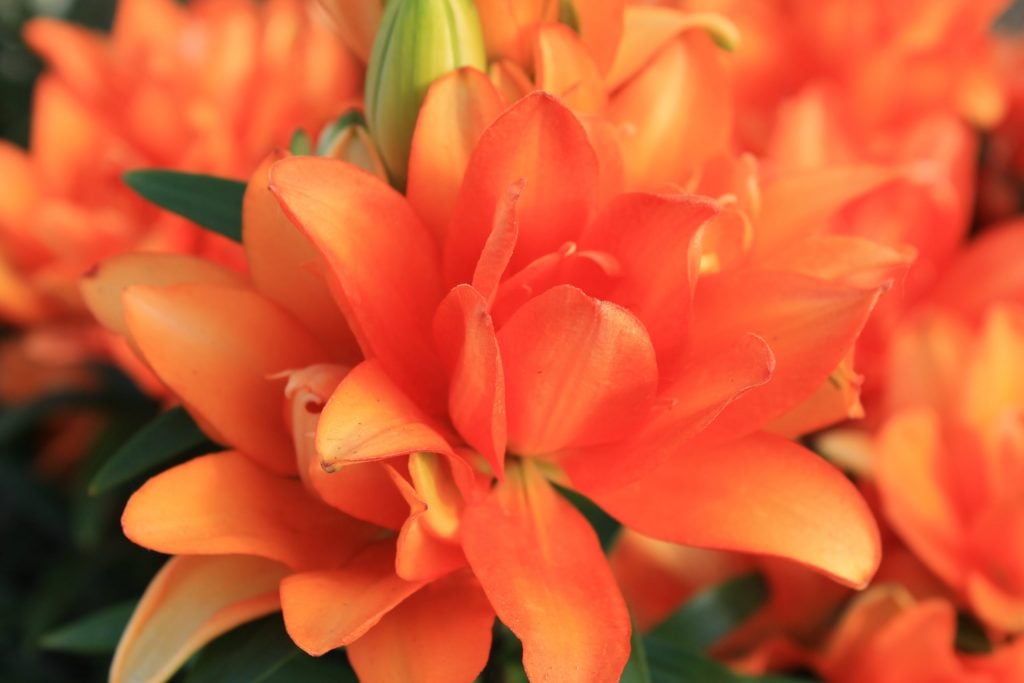
Tiny double you lily is the most gorgeous plant you can grow in small pots. This dwarf lily has very few leaves, and they have double orange flowers that bloom in midsummer. Just plant them in a tiny spot with full sun, and they will bring so much charm to your garden.
4. Tiny Todd
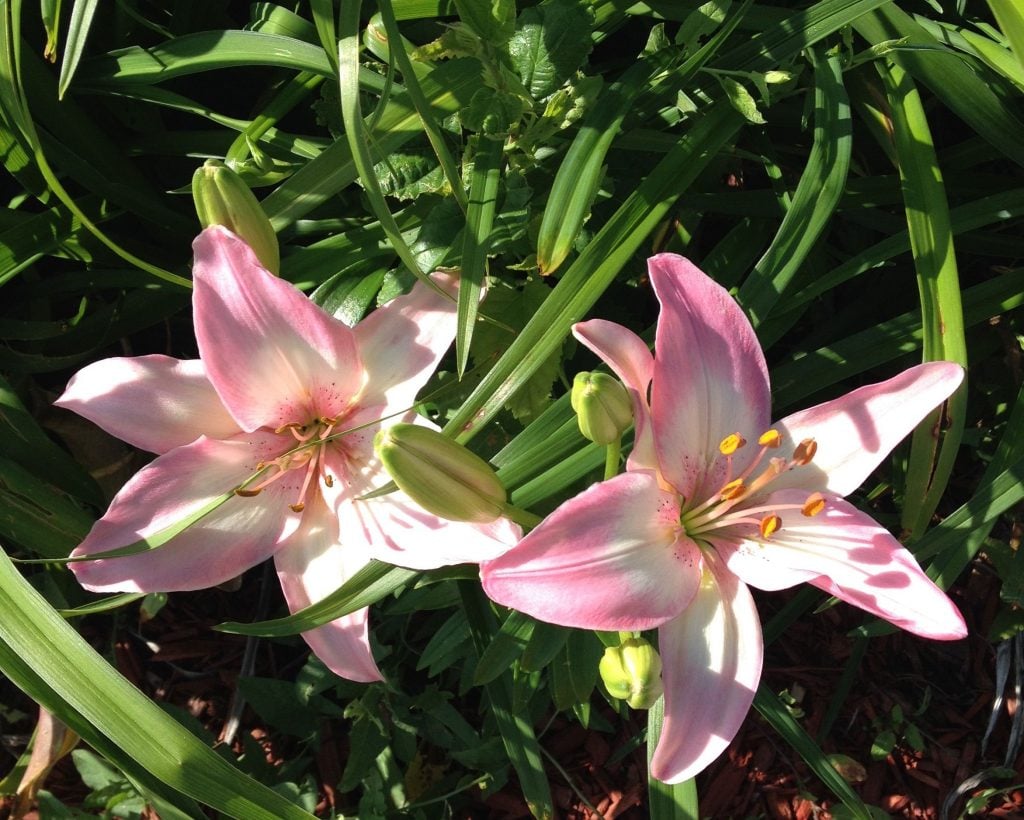
Tiny Todd is an early-blooming dwarf lily that is suited for garden borders or rock gardens. It adorns big white flowers with a hint of pink contrasting the glossy green foliage. They add a great show and feel to your garden with their beauty and mild fragrance.
5. Tiger Lily
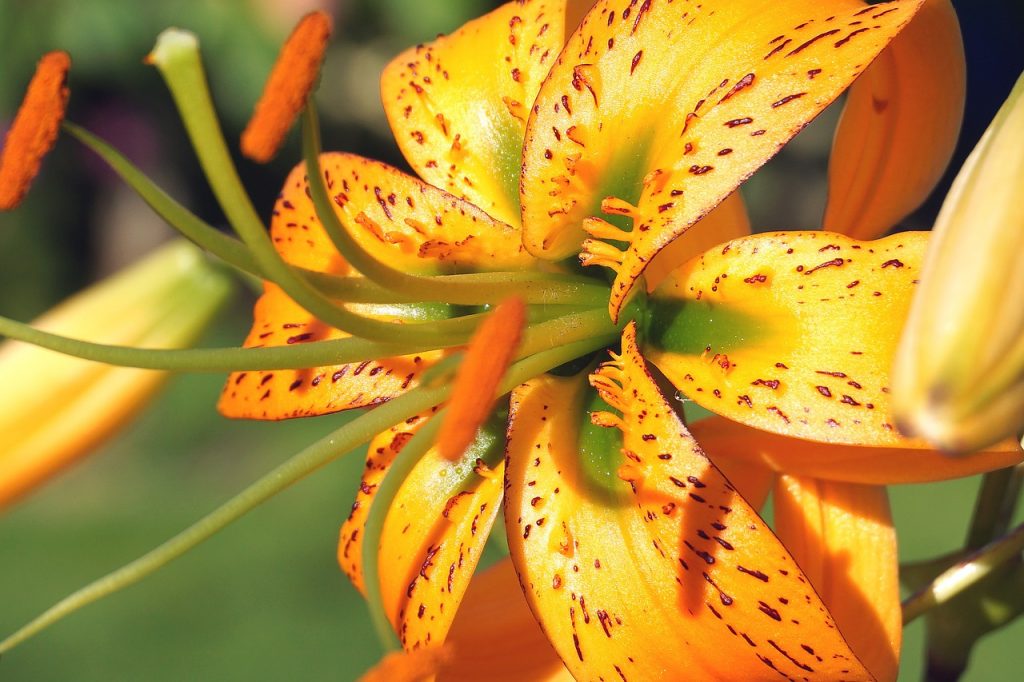
Bright orange petals flowers with tiny black spots, tiger lilies easily become the centre of attraction for any garden. Plant them in well-draining soil, under full sun, in your garden or the container. They can grow up to 3.5 feet in height, which makes them suitable for creating garden borders.
6. Eyeliner
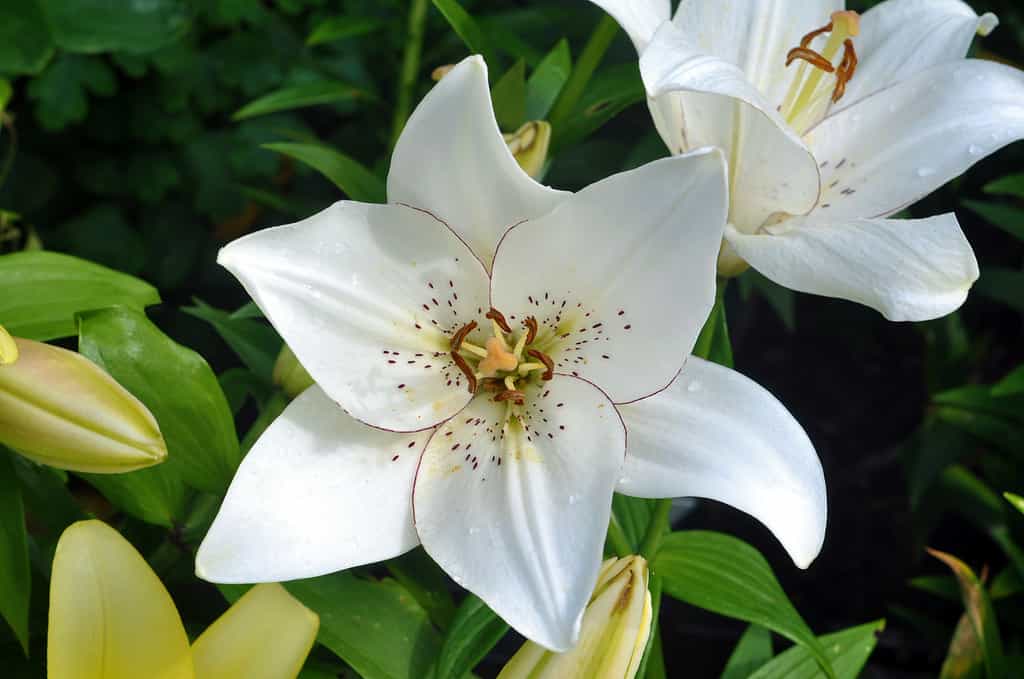
Eyeliner lilies look unique with their gorgeous white petals, which have chocolate-black borders. They grow vigorously on a strong stem with beautiful foliage. This variety multiplies over time and grows bigger and stronger each year.
7. Red twin
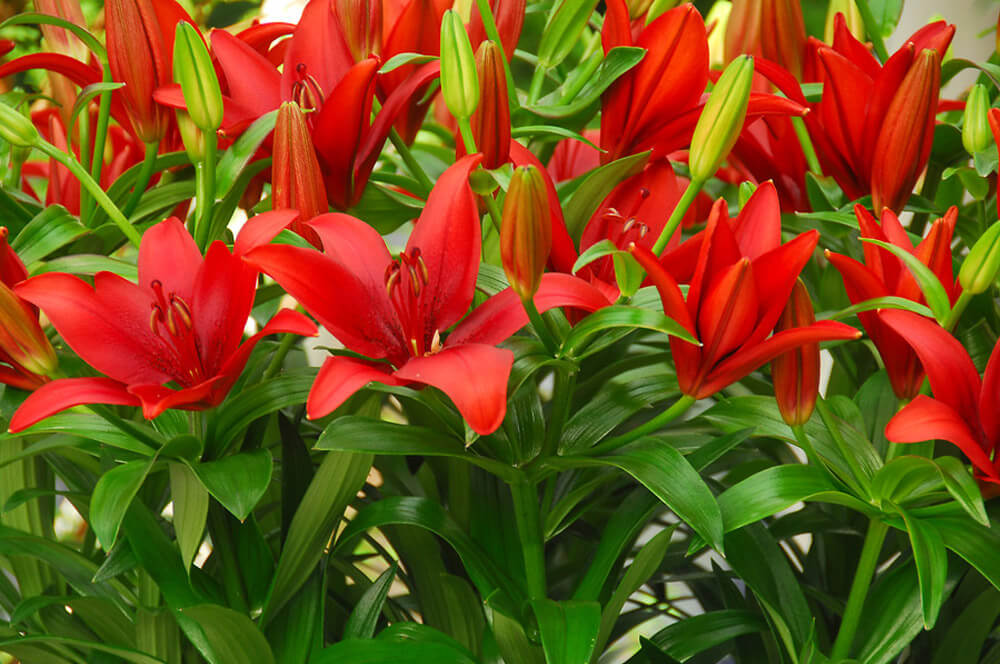
This pollen-free lily grows in a unique structure. One frame of outer petals carries a similar smaller frame inside it, which looks like it is a twin, hence the name. The petals of red twin lilies are a rich shade of orange and red that faces upward. They grow well in a sunny spot and produce more flowers each coming year.
7 Tips for The Best Asiatic Lily Blooms
- Deadhead Asiatic lilies as soon as the petals start dropping to prevent the plant from using its energy on seed development.
- Never prune the foliage because the leaves gather energy to store in the bulb for the next season’s bloom. Though, the leaves may die off naturally during the fall.
- Provide the bulb with some protection during winter by maintaining the soil temperature with a thick layer of organic mulch after the foliage dies in fall.
- Please make sure to remove the mulch after the danger of frost goes away to give some room for new growth.
- When planted in partial shade, the lilies tend to bend at an angle and grow toward the light. So, place and plan your spacing accordingly.
- While buying lily bulbs, they should feel firm to touch and mould-free. Should be planted immediately; if left unplanted for a long time, they may dry out.
- Taller varieties may need staking with metal or bamboo support, as the last thing you want is for your flower stems to bend and break.
Final Thoughts
All in all, proper care of your lilies will take you a long way in creating a beautiful display of colourful flowers each spring. Select a mix of varieties with different colours to plant it in your garden. Use them as a focal point, backdrop, or pathway border; they never miss to get all the attention. Asiatic lilies are a non-complaining companion and can grow along with other flowering plants to curate a beautiful summer garden.
Their beauty and charm are worth all the time and effort you invest in growing and caring for them. Asiatic lilies do not take much space to flourish and can effortlessly upscale the charm with their unmatchable beauty added to your garden.
Start planting today, and let the beauty of Asiatic lilies amaze you each blooming season!

